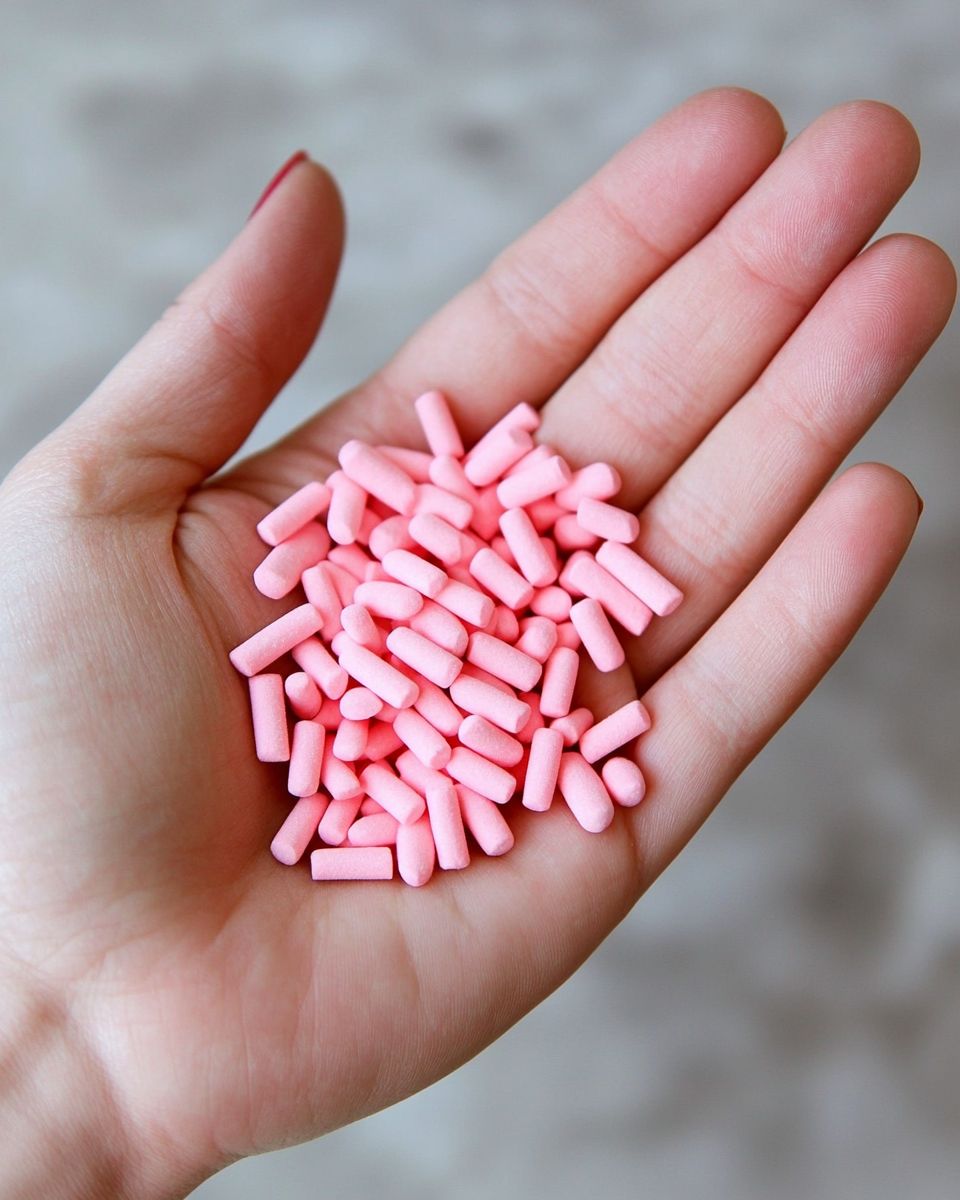ADVERTISEMENT
Found Strange Pink Chalk-Like Pellets in My Yard: What Are They and Should You Be Concerned?
If you’ve ever stepped outside to find unusual, pink, chalk-like pellets scattered around your yard, you might have been left feeling a bit uneasy, especially if you have pets and a baby. The lack of odor, the lightness of the pellets, and their strange color can certainly raise questions. Are they dangerous? Should you be concerned about your loved ones, both furry and human? Let’s dive into what these strange pellets could be and whether you need to take action.
What Are These Pink, Chalk-Like Pellets?
The good news is that, while the appearance of these pellets might seem alarming, in most cases, they are not dangerous—though they should still be investigated to ensure safety. Based on your description, here are some potential culprits:
1. Crushed Fertilizer or Lawn Treatment Pellets
One common explanation for the pink pellets is that they’re part of a lawn treatment product, such as fertilizer, pest control, or herbicide. Some fertilizers contain a type of nutrient in pellet form, and certain products may use a pink dye to make them more visible to homeowners. The chalky texture is a result of the ingredients in the fertilizer. These products are often designed to be safe when used according to the manufacturer’s directions, but you should still be cautious around pets and children.
2. Rodent or Pest Bait
Another possibility is that these pellets are rodent or insect bait. Some pest control products, particularly those used for rodents, are formulated in pellet form and may be dyed for easy identification. While they are designed to attract pests, they can also be toxic to pets and children if ingested. Typically, these products will be labeled with a warning, so it’s important to check your yard or nearby areas for any signs of pest control activities.
3. Garden Lime or Soil Treatment Products
Certain soil treatments, like garden lime, can sometimes come in pellet or granule form. Lime is often used to correct soil pH in gardens or lawns, and it can sometimes be dyed for visibility. Like fertilizers, garden lime is generally non-toxic, but ingestion in large amounts can cause irritation or discomfort, particularly in pets.
4. Chalk or Dye from a Nearby Source
Occasionally, the pellets might not be something from your yard care regimen at all. It’s possible they could have come from a nearby neighbor, or even children using chalk as part of a game. Some non-toxic chalk can break into small pieces, especially if it rains or if the pellets are older. This could be a benign explanation, but it’s worth verifying.
Should You Be Concerned?
Even though the pellets may seem harmless, there are still a few important things to keep in mind, especially with pets and a baby in your home.
If They Are Fertilizer or Lawn Treatment Pellets:
- Risk Level: Fertilizers and lawn treatments can vary in their level of toxicity. If the pellets are related to a chemical treatment, they could be harmful if ingested in significant quantities. Some fertilizers are made with organic ingredients that are safer, while others may contain toxic chemicals.
- Precaution: Keep pets and children away from the affected areas until you can confirm what the product is and whether it is safe. Always read the labels of any lawn care products, and make sure they are applied and stored according to the manufacturer’s instructions.
If They Are Rodent or Pest Bait:
- Risk Level: Rodent and insect baits are typically toxic to both pets and children, especially if ingested. Some baits contain anticoagulants, which can cause internal bleeding, or other highly toxic ingredients.
- Precaution: Immediately remove any pellets if you suspect they are rodent or pest bait. Check the labels on pest control products around your yard, and make sure they are placed in areas that are inaccessible to pets and children.
If They Are Garden Lime or Soil Treatment Products:
- Risk Level: Garden lime is typically non-toxic, but if ingested in large amounts, it can cause gastrointestinal irritation or discomfort.
- Precaution: While lime is generally safe, it’s always a good idea to keep pets and children from eating any non-food substances. Rinse the area with water if you think any lime might have been ingested by your pet.
If They Are Chalk or Dye:
- Risk Level: Non-toxic chalk and dye used in children’s games are generally harmless. However, some colored chalks can contain food dyes or pigments that, while non-toxic, can still cause mild digestive upset if eaten in large quantities.
- Precaution: If you suspect the pellets are chalk, it’s not a cause for major concern. Just make sure your pets and kids don’t eat them.
- For Complete Cooking STEPS Please Head On Over To Next Page Or Open button (>) and don’t forget to SHARE with your Facebook friends
